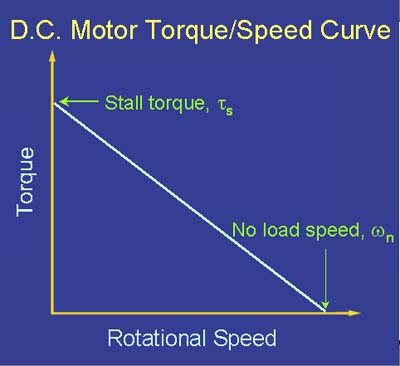In your question you asked for a motor with a high stall torque. This property should be given by the manufacturer, i.e. it is a specification. However, diameter, the motor constant are generally proportional to torque capabilities in the same motor family. In addition, you get more torque with additional current.
In general however, when specifying a motor you want to know its operating point, i.e. its speed and torque. You generally get this from the motor's characteristic torque-speed curve. Torque and speed are linearly related in an electric motor. Generally this curve is defined by the stall torque and the "no load speed". The "stall torque" is the torque at zero speed. The "no load speed" is the speed with zero torque resisting the motor's rotation. These should be given in the motor specification and they define the torque-speed curve:

Reference: http://lancet.mit.edu/motors/motors3.html
The operating point is somewhere on the torque-speed curve. There are many ways to obtain the operating point. However, since you've given me the electrical power, it can be obtained from it, the motor's efficiency and the torque-speed curve. The mechanical power is the a quadratic function of the speed and the integral of the torque-speed curve.

You've specified the electrical input power, i.e. 12V*10A = 120W. The motor turns this electrical power into mechanical shaft power with some power is lost to heat. Typical DC motors are more than 85% efficient in this energy conversion process, so as a rough approximation, say you get out 100W of mechanical power. The efficiency should given by the manufacturer.
Thus, there are two possible speeds for any one torque. But the torque or speed can be found using these equations.

The power is these equations is the mechanical power, not the electrical power in.
All this only applies to a steady state of the system and doesn't consider the transient portion of the motor's motion.
You seem to require a lot of torque and not much speed, therefore, I would seriously consider a geared motor. If you gear down the output speed, you shift the torque speed curve by reducing the no load speed and increasing the stall torque. This can lower the cost of your overall system by reducing greatly the size of motor required. Its is not practical to get a lot of torque from an direct drive system. You know you've chosen a motor badly if it is not running near its peak power, i.e. at half the no load speed. Why buy a really big expensive powerful motor then run it at 1% power output!? This is silly!! Instead by a motor that will run near its maximum power output but be geared down to deliver the same torque. However, you have not specified what your mechanical requirements are. You should start there.




